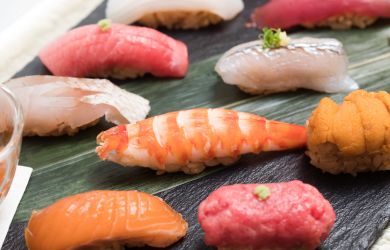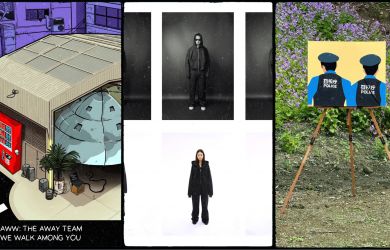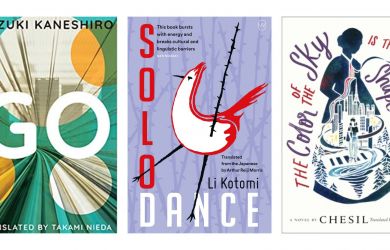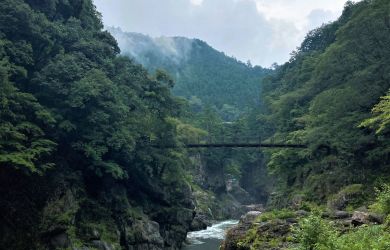
July 10, 2014
Manga for the Masses
Artist Jamie Lynn Lano wants Japanese comics to go mainstream
By Metropolis
Originally published on metropolis.co.jp on July 2014

American artist Jamie Lynn Lano worked as a manga-ka (manga artist) on The New Prince of Tennis (2009-ongoing)—the continuation of The Prince of Tennis (1999-2008), one of the most successful manga series of all time. The original series has been made into a movie, a live action drama, and several musical stage productions as well as the standard anime series. She has recently returned to the U.S. to further her dreams of making her own manga magazine. Lano chatted with Metropolis about her escapades in Japan and her new life as a TV show host, monthly columnist and book author.
What are your current projects now that you’ve returned to the U.S.?
After I returned to the States, I took it easy for a while as I was exhausted from years of scraping by on barely enough money to live. I took a break, then started working on my book. Now that it’s finally finished, I’m moving onto my next project, which is a manga of my own! The manga is already in production, and I will be making appearances at various conventions in the U.S. to talk about my work and the techniques I learned while working for [Prince of Tennis creator] Takeshi Konomi.
As for my ultimate goal, I’d like to start a manga magazine that publishes abroad (not in Japan), with quality, all-original content. I feel that if Japan—which is geographically such a small country—can produce so many diverse creator-owned comics, then imagine what kind of talent is out there in the world! I want to actively seek out artists that are not from Japan to draw for it. That said, I wouldn’t refuse comics from Japan. In fact, it might be a wise move to recruit a manga-ka who is very popular abroad to draw a new title for us, in order to draw in his/her fans.
As for genre, that’s something that will have to be decided by the entire team that I put together, but tentatively I’d say that it would be aimed at the “young-at-heart.” Anyone who reads Shonen JUMP or Cookie would hopefully find something in it for them.

What inspired you to start “How to be a mangaka” on your blog (www.jamieism.com)?
The main reason that I write about how to get a career drawing manga is because I’m asked that question a lot. I’ve blogged about working on The Prince of Tennis for some time, so people ask me, “How can I do that, too?” Even though I was only an assistant, I’ve been fairly active online, and I suppose I’m easy to approach. I can’t let everyone down, can I?
There’s also the whole, “I want to make a manga magazine” thing I mentioned earlier. I hope that some of the people that I teach now will one day make a really, really amazing manga. I’ll then get to read that manga, and it will have been totally worth it.
What inspired you to write about your experiences with Tenipuri in the first place?
I suppose that it was just a natural progression, really. I had been blogging since college (remember LiveJournal?), back in 2002. I blogged about all of my decisions including moving to Japan and getting a job with Konomi-sensei as they were happening, although what I wrote for myself privately and what I wrote for public consumption was a bit different. Back then, I kept a lot of it to myself.
The book just sort of happened. I spent so much time writing the blog posts about working for Konomi-sensei, and getting a lot of comments from readers saying that they’d just discovered it and stayed up all night reading through, even though they had a college exam the next day, and how they wanted to work for a manga-ka, too. I listened to them and thought, “Hey, this would make a cool book! I could reach a lot more people and maybe they’ll be inspired to pursue their dreams!”
What is the most important thing you learned working on Tenipuri?
Of course, I learned plenty of drawing techniques. I even experienced what not to do when dealing with celebrities (like don’t date them!), and picked up a lot of Japanese, purely out of necessity. But first and foremost—patience.
It was frustrating when I didn’t understand the directions that I was given or when I was working with new manga drawing tools. I had to figure it out myself. Also it was the sort of job where you live at work, literally. For two or three weeks at a time sometimes, I would sleep in a little tiny room along with my co-workers—with three bunk beds. There was also a lot of idle time and waiting involved. I matured leaps and bounds during those two years.
5 Things I Wish I’d Known Before Becoming a Manga Artist

1. Learn to draw, and draw well. Many people ask how to become the writing half of a manga-ka team, like the characters Akito and Moritaka in the series Bakuman. However, most manga-ka both write and draw their own stories, and there are very few people who want to draw someone else’s story unless they’re getting paid a fair wage for it. Anyone can teach themselves how to draw, it just takes time and effort.
2. Practice telling stories through art. Have you ever read a manga and found it hard to follow what’s going on? That’s because the artist isn’t very good at telling a story through sequential art. When you’ve storyboarded your manga, read through it yourself or give it to a friend, and see if the story is easy to follow.
3. If it’s your goal to get published in Japan, then either send in your stories directly to the magazine that you want to publish in from abroad (translated into Japanese) or move there and take a different job to support yourself while you try to get published.
4. Don’t be afraid of getting your work out there. Online comics and self-published books are both great options that don’t require input from editors. Make your own comics and share them with people.
5. Never give up! Be realistic by putting in the work that’s necessary to complete your comic, but don’t expect success overnight. Keep on working, and working hard. Every goal is attainable if you work hard enough. You can do it, and don’t let anyone tell you that you can’t.





